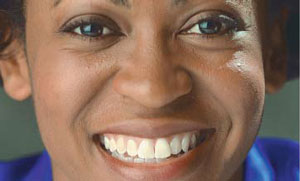
Preventative healthcare, championed as a cost savings for everyone, and a better alternative to a major medical emergency, it also allows for a longer healthier life. All the medical advertisements and many doctors tell people to take control of their health — check their blood pressure, begin exercise programs, eat a balanced diet, and take precautionary tests for cancer and other potential ailments. However, one test often neglected, and rarely discussed between medical professionals and the patient are the medical problems associated with deteriorating bone density.
Good health is vital to a vigorous and long life, and the issues of bone density loss can be
debilitating later in life. Bone density is less likely to cause future health problems if addressed
early in life.
The one most recognized condition is osteoporosis, which means a loss of bone density that later in life may include side effects such as a weakening of the bones, thus causing fractures and breaks. These outcomes become further exacerbated in postmenopausal women.
Along with osteoporosis, studies also suggest that there is a link between bone density loss and depression. While there is some debate whether symptoms of osteoporosis cause depression, the study “Depressive Symptoms, Bone Loss, and Fractures in Postmenopausal Women,” finds similar physiological processes between osteoporosis and depression. The study also suggests that depression may stimulate bone density loss by discouraging an active lifestyle, a healthy diet that includes calcium supplements, and unhealthy activities like smoking. Most of these actions trigger bone density loss.
The article “Coronary Heart Disease and Risk and Bone Mineral Density Among U.S. Women and Men,” suggests that bone density may also be an indicator of cardiovascular disease. The findings indicate that low bone density is a predictor of cardiovascular disease and coronary heart disease in women, as well as hypertension, acute stroke, and atherosclerosis.
 Bone density problems present high risks for specific races and ethnicities. For example, African-Americans possess the highest bone density mass and are less likely to suffer from bone loss ailments like osteoporosis. Caucasians, Hispanics, and Native Americans, respectively, had the next highest bone density mass, with Asian Americans reportedly having the lowest bone density mass. Although African-Americans, understandably, are least likely to suffer from bone fractures, the same holds true for Asian Americans. The article suggests that the anomaly of Asian Americans experiencing less frequent bone fractures, despite the lower bone density, may be attributed to both genetics and diet.
Bone density problems present high risks for specific races and ethnicities. For example, African-Americans possess the highest bone density mass and are less likely to suffer from bone loss ailments like osteoporosis. Caucasians, Hispanics, and Native Americans, respectively, had the next highest bone density mass, with Asian Americans reportedly having the lowest bone density mass. Although African-Americans, understandably, are least likely to suffer from bone fractures, the same holds true for Asian Americans. The article suggests that the anomaly of Asian Americans experiencing less frequent bone fractures, despite the lower bone density, may be attributed to both genetics and diet.
Though genetics is outside an individual’s control, diet is not, and adding a calcium supplement to counter the effects of osteoporosis, with vitamin D to help the body digest the calcium will aid in the prevention of bone loss. The article advises eating whole grains, fruits, and vegetables, and shows that “Links between dietary pattern and bone density loss,” lowers trauma fractures. This nutrient rich diet is the first diet found to fortify bones.
In an effort to counter bone loss, doctors often recommend activities that strengthen bones, such as walking, dancing, jogging, and strength training with weights (especially for women). All weight-bearing exercises stimulate bone density and decrease bone loss, but a doctor may also prescribe medication to prevent osteoporosis.
Those 65 and older should begin routine bone density tests, women should begin the testing at age 60, and anyone with type 1 and type 2 diabetes are highly susceptible to osteoporosis.
Preventative care may cause habit changes, and it is a cheaper alternative than living with untreated health problems. When visiting the doctor for that annual checkup, including a bone density test may help to thwart health problems later in life. No cheaper alternative exists when it comes to prevention of bone density loss than a test that details the current condition of bone density, diet, exercise, and restraint from unhealthy life choices.
Sources:
“Bone Mass Measurement: What the Numbers Mean.” NIH Osteoporosis and Related Bone Diseases National Resource Center. (May 2009). http://www.niams.nih.gov/Health_Info/Bone/Bone_Health/bone_mass_measure.asp
Broussard, Danielle L. and Jeanette H. Magnus. “Coronary Heart Disease Risk and Bone Mineral Density Among U.S. Women and Men.”Journal of Women’s Health (April 1, 2008). Print.
"Link between dietary pattern and bone density examined.” Nursing Standard. (February 23, 2011). Print.
Spangler, Leslie, Delia Scholes, Robert L. Brunner, John Robbins, Susan D. Reed, Katherine M. Newton, Jennifer L. Melville, and Andrea Z. LaCroix. “Depressive Symptoms, Bone Loss, and Fractures in Postmenopausal Men.” Journal of General Internal Medicine. (May 1, 2008). Print.
Walker, Marcella D. and John P. Bilezikian. “Racial differences in bone density and fracture risk in United States.” International Journal of Rheumatic Diseases. (December 1, 2008). Print.
“What People with Diabetes Need to Know about Osteoporosis.” NIGH Osteoporosis and Related Bone Diseases National Resource Center. (October 2010). http://www.niams.nih.gov/Health_Info/Bone/Osteoporosis/Conditions_Behaviors/diabetes.asp

Comments
I think this is really the
I think this is really the great information shared with us , i m really impressed with this , it will really helps and guides many peoples, thanks for the sharing.